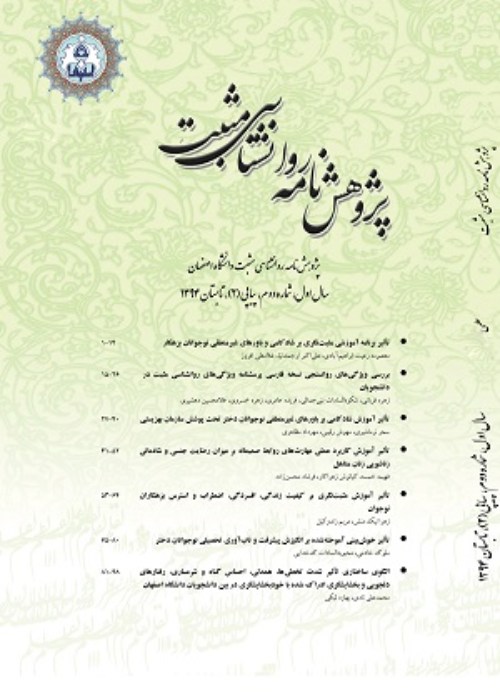Classroom flourishing and its academic consequences
The purpose of the current research was to examine the fit of the systemic classroom flourishing model (FCSM) of Allison et al. (2020) and determine its academic consequences. The current research was descriptive and of the type of correlation studies and specifically structural equation modeling based on the partial least squares (PLS) approach. Using the multi-stage cluster sampling method, 1000 students of the second year of high school in Arak city were selected from 20 schools and 100 classrooms (10 students in each class) and used research tools including the classroom flourishing scale (Bayat and Rezaei , 1401), Martin and Marsh's academic vitality questionnaire (2006), Harter's academic motivation questionnaire (1981), academic satisfaction subscale, derived from Heubner's multidimensional life satisfaction scale (MSLSS), and Rio's academic engagement questionnaire (2013). In order to analyze the data, partial least squares (PLS) method was used. The results showed that the classroom flourishing model and its academic consequences have an acceptable and satisfactory fit. According to the mentioned model, classroom flourishing consists of 4 factors of cohesion, flexibility, communication and well-being, with factor loadings of 0.885, 0.902, 0.854 and 0.965, respectively. Also, the factors of cohesion, flexibility and communication each consisted of three subscales and the well-being factor consisted of six subscales, all of which had satisfactory factor loadings. In addition, according to the mentioned model, the most important academic consequences of classroom flourishing are academic involvement, academic motivation, academic vitality, academic satisfaction and academic progress. The divergent validity of the classroom flourishing model and its academic outcomes were investigated and confirmed using the heterotrit-monotrit (HTMT) criterion and its convergent validity using the average explained variance (AVE) and the Rau reliability index (rho). The reliability of the model tools was calculated using Cronbach's alpha coefficient and composite reliability (Dillon-Goldstein coefficient). The results showed that all the obtained coefficients for the main variables of the model are favorable and satisfactory (between 0.837 and 0.973). The overall fit of the model was also obtained using the GOF goodness of fit index (Tennhaus et al., 2004) equal to 0.64, which indicates a strong fit of the model. In general, based on the results, it can be said that the classroom flourishing model has a good fit, and the developed model and tools can be used to monitor the classroom flourishing and improve it.
- حق عضویت دریافتی صرف حمایت از نشریات عضو و نگهداری، تکمیل و توسعه مگیران میشود.
- پرداخت حق اشتراک و دانلود مقالات اجازه بازنشر آن در سایر رسانههای چاپی و دیجیتال را به کاربر نمیدهد.


